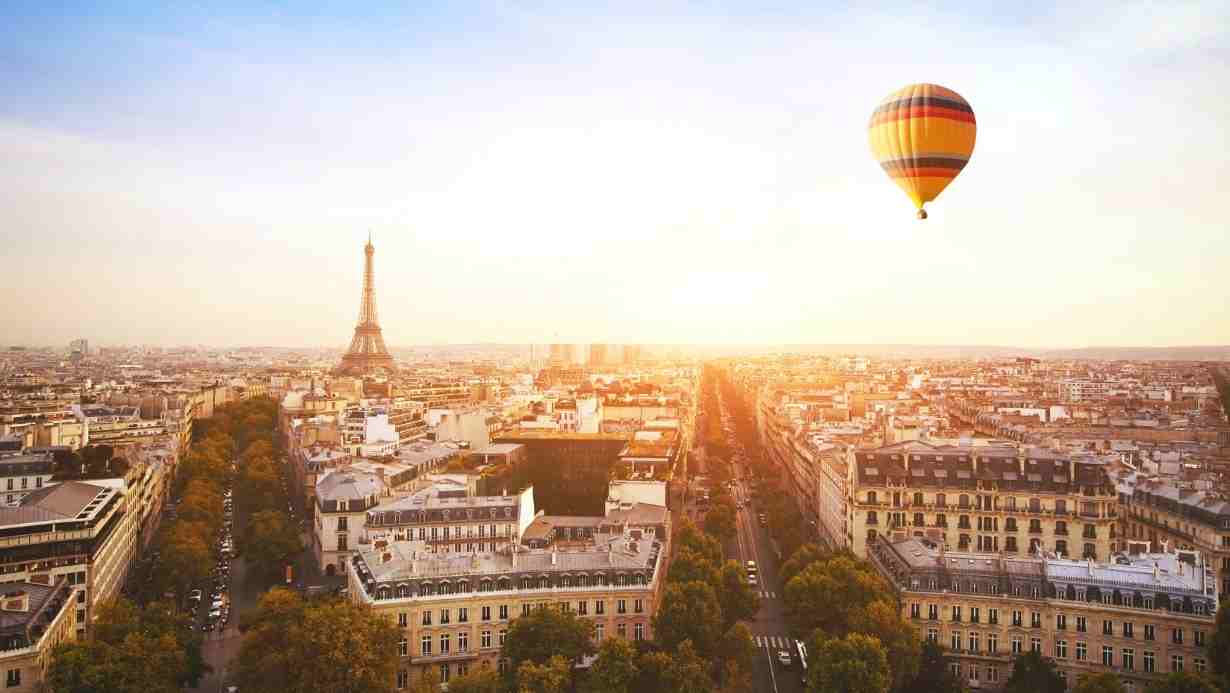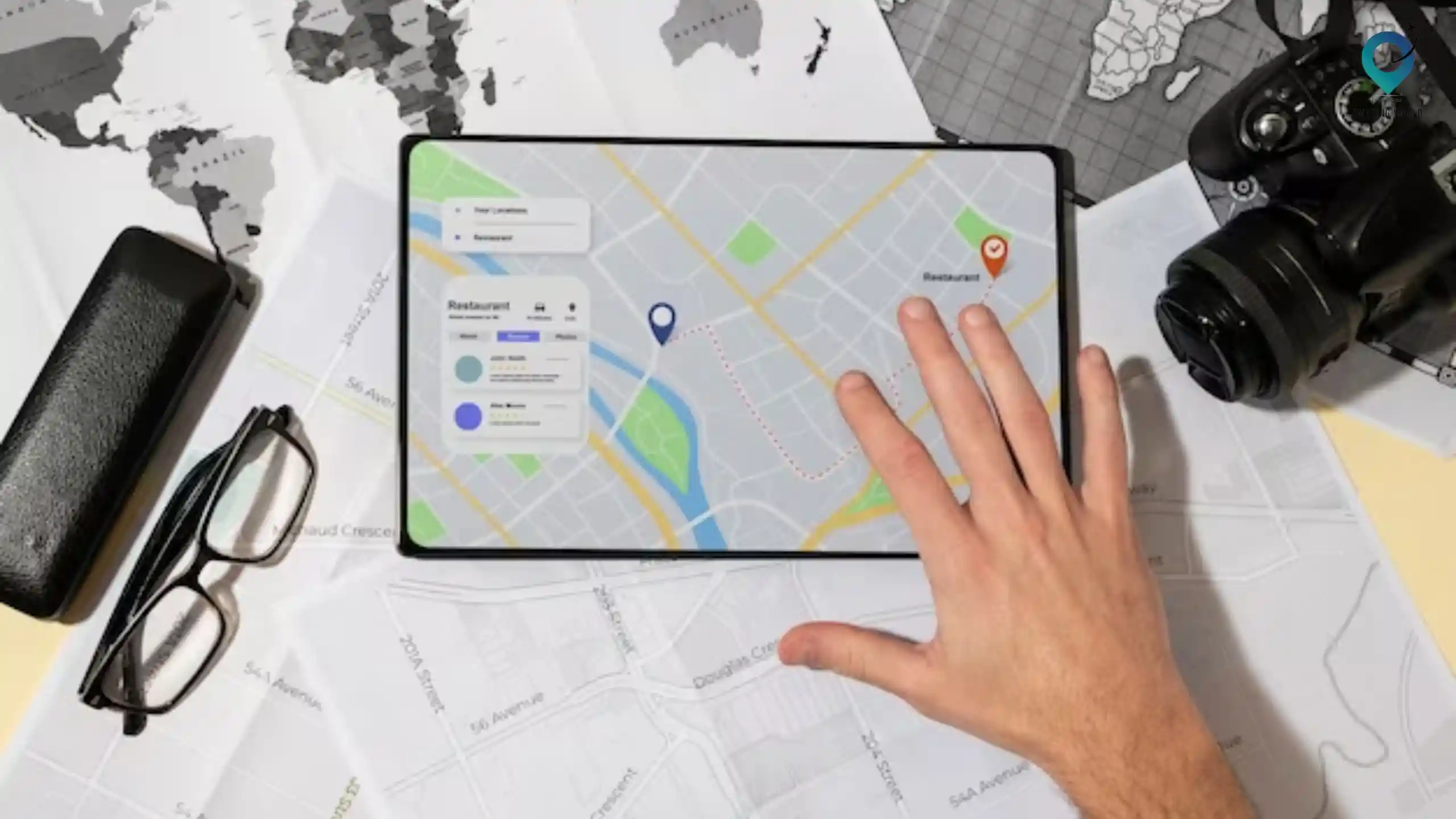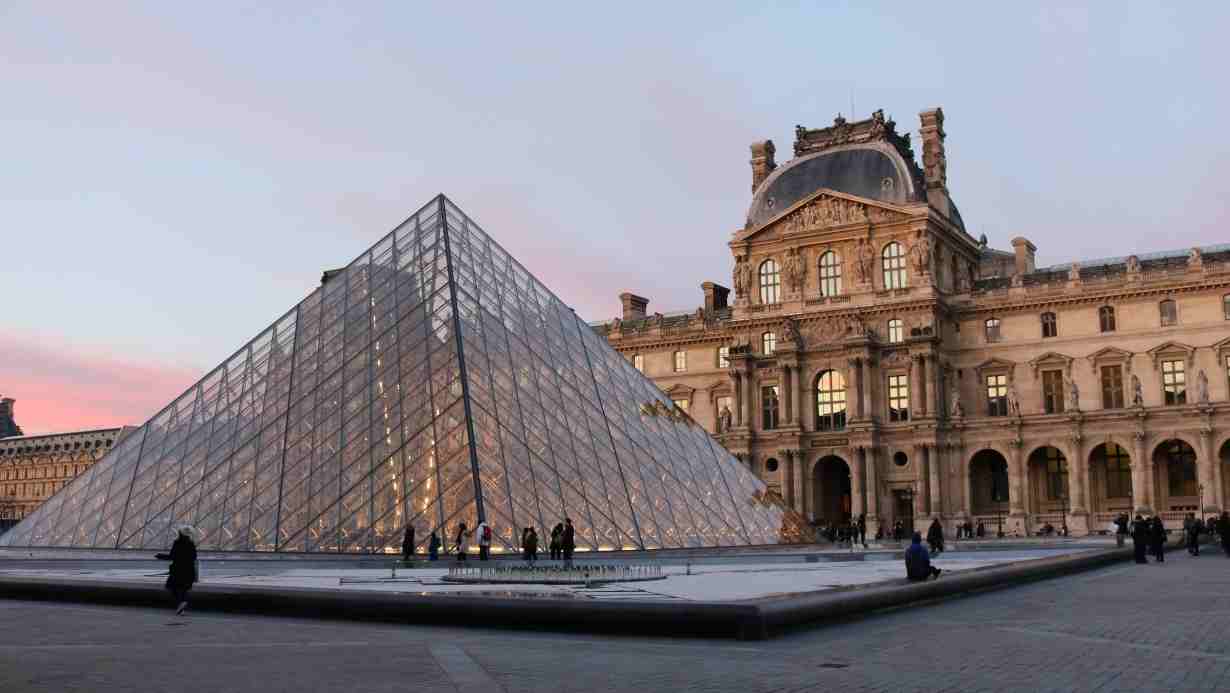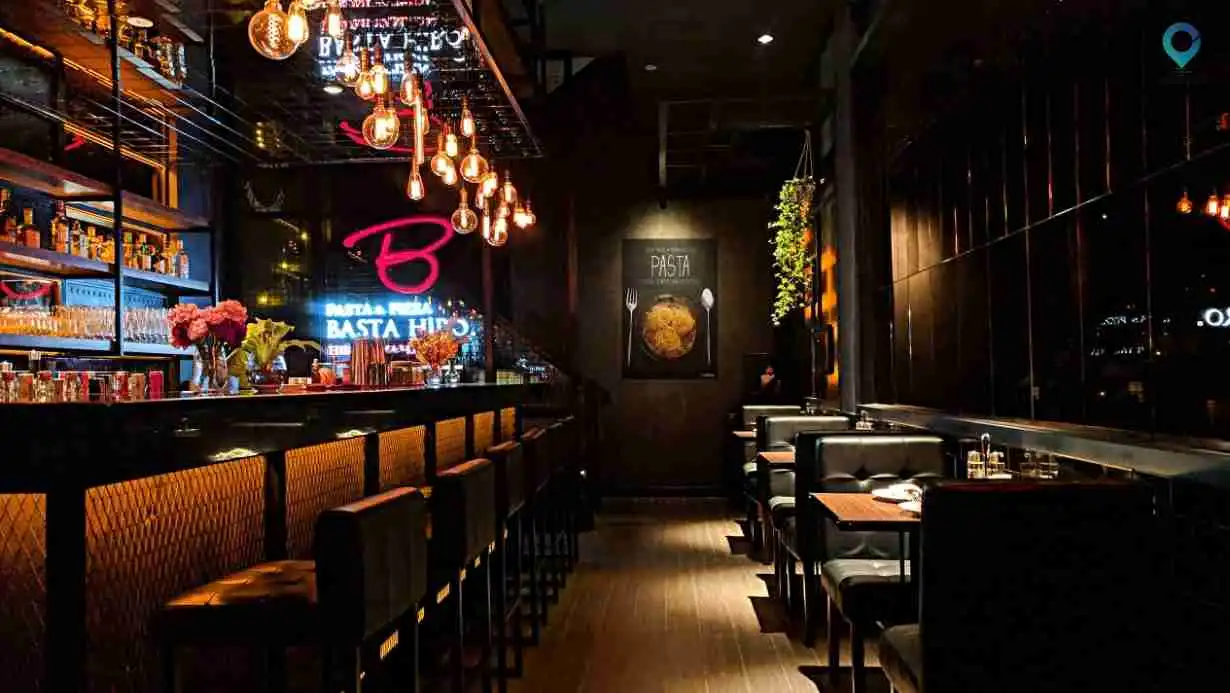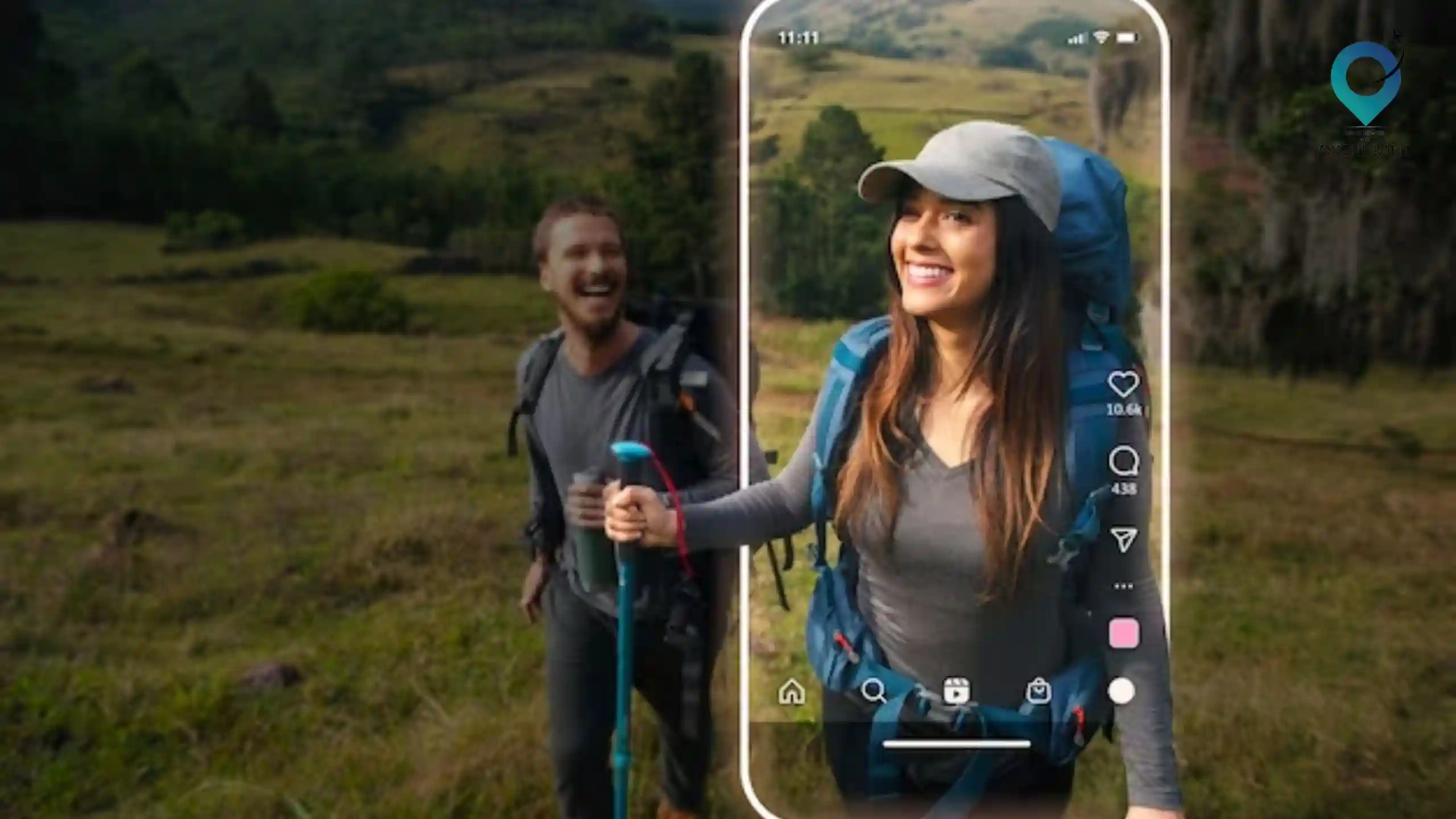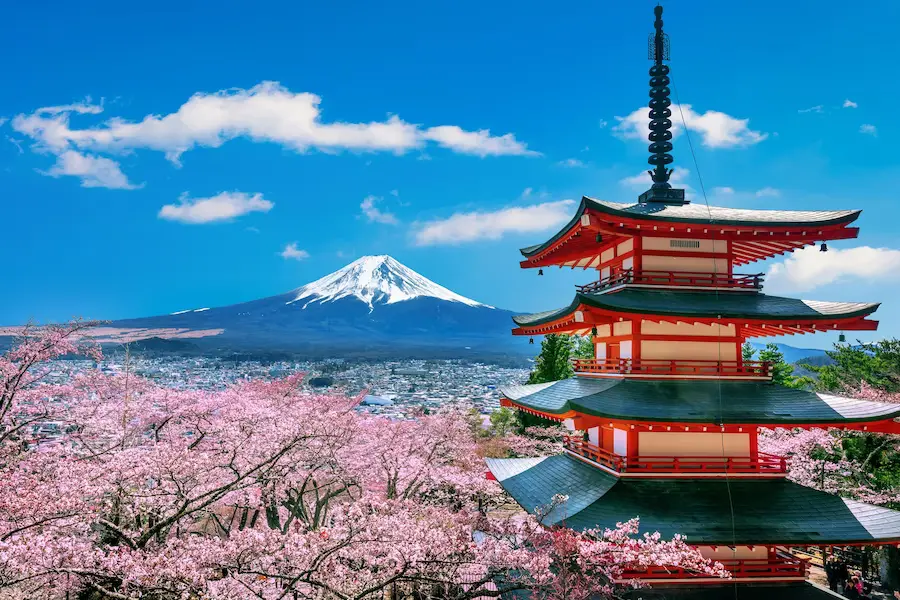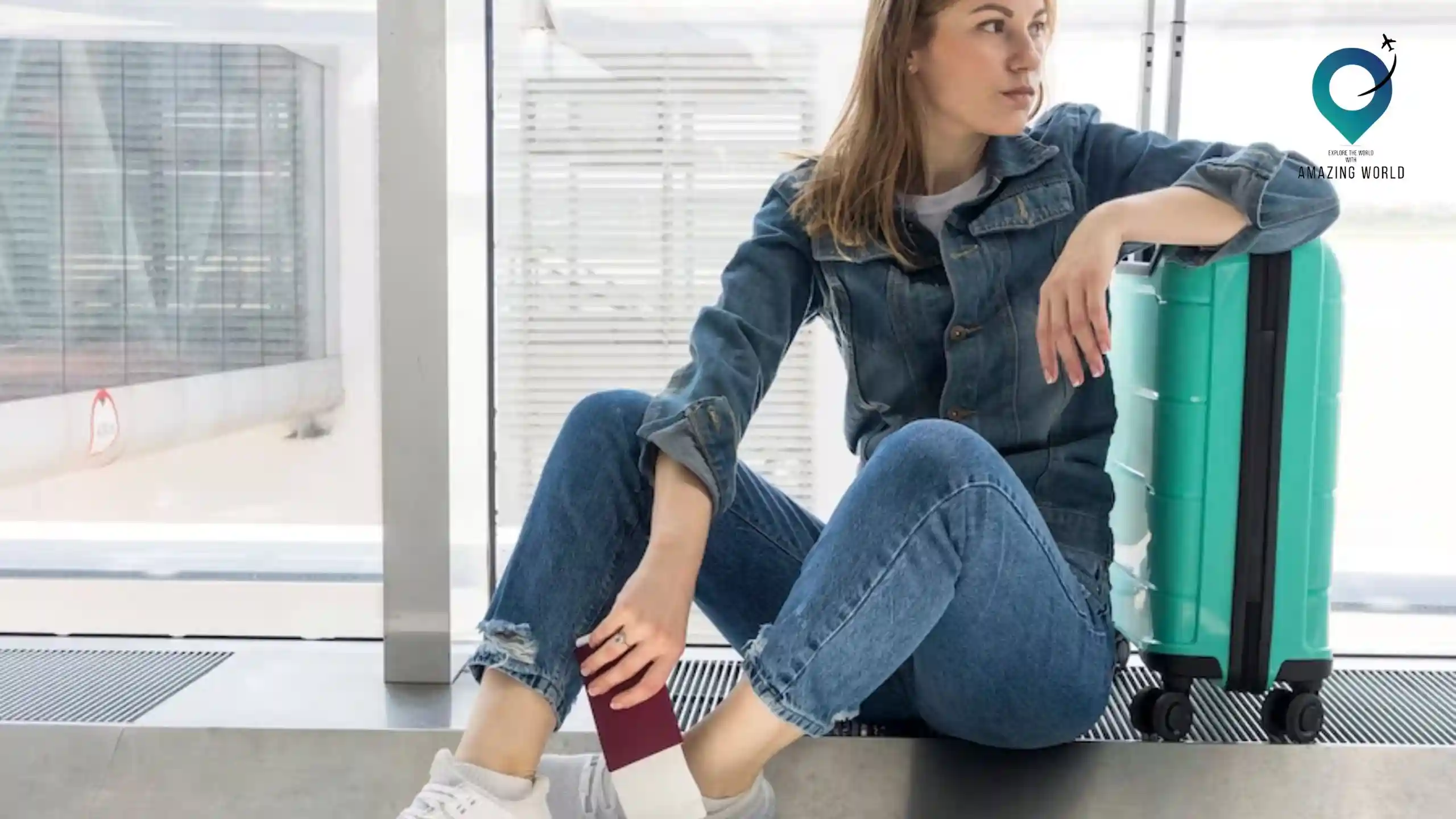20+ Essential Tips for Your Paris Trip: A Must-Read Guide
In this guide, we’ll uncover the secrets to planning your trip, experiencing the rich culture, savoring culinary delights, exploring hidden gems, capturing timeless memories through photography, and so much more. You’ll find tips on using public transportation, dealing with common tourist challenges, and even respecting the environment to ensure you make the most of your Parisian escapade.
Also, if you are looking best hotels and Homestay deals then we recommend booking your hotels and homestay with priceline.com
1. Planning Your Trip
Planning a trip to Paris is the first step towards an unforgettable experience in the City of Light. To make the most of your visit, you need to carefully consider several key aspects of your journey. Here are some essential tips for planning your trip:
Choosing the Right Time to Visit
Selecting the right time to visit Paris is crucial for your overall experience. Paris has something to offer in every season, and your choice largely depends on your preferences:
- Spring (March to May): This season offers pleasant weather, blooming gardens, and fewer tourists. It’s an excellent time for leisurely walks and enjoying outdoor attractions.
- Summer (June to August): Paris is most crowded during these months, but it’s also when you can experience numerous outdoor festivals, open-air concerts, and long daylight hours.
- Autumn (September to November): The fall season provides a more relaxed atmosphere, and the city’s parks and gardens showcase stunning autumn foliage. This is an ideal time for cultural exploration.
- Winter (December to February): While it’s the coldest season, Paris during the winter months is adorned with festive decorations, Christmas markets, and fewer tourists. It’s an enchanting time to experience the city’s holiday spirit.
Setting a Realistic Budget
Paris can be both luxurious and budget-friendly, so it’s crucial to set a budget that aligns with your travel style. Consider the following:
- Accommodation: Decide whether you want to stay in a luxury hotel, a boutique guesthouse, or a budget-friendly hostels. Paris offers a wide range of options to suit different budgets.
- Dining: Dining in Paris can range from Michelin-star restaurants to charming bistros. You can save money by enjoying affordable street food, local cafes, or opting for prix-fixe menus at lunchtime.
- Attractions: Many attractions in Paris have entrance fees. Prioritize the ones you want to visit and check if there are any discounted passes or combination tickets available.
- Transportation: Consider the cost of public transportation, taxis, and airport transfers. The Paris Visite card or Navigo card can help save on transportation expenses.
Booking Accommodation in Advance
Booking your accommodation in advance is a smart move, especially during peak tourist seasons. Keep these tips in mind:
- Location: Choose a central location for easy access to major attractions. Popular areas include Le Marais, Saint-Germain, and the Latin Quarter.
- Online Reservations: Use reputable websites to book accommodations. Read reviews and check for any special deals or discounts.
- Early Booking: Some hotels and rental properties offer discounts for early bookings, so plan to secure the best rates.
- Consider Apartment Rentals: If you’re traveling with a group or for an extended period, renting an apartment can be cost-effective and provide a more authentic experience.
Obtaining Necessary Travel Documents
Ensure you have all the required travel documents to avoid any last-minute stress:
- Passport: Check the expiration date on your passport; it should be valid for at least six months beyond your planned departure date.
- Visa: Verify whether you need a visa to enter France, depending on your nationality and the purpose of your visit.
- Travel Insurance: It’s advisable to have travel insurance that covers medical emergencies, trip cancellations, and lost luggage.
- Copies and Scans: Make copies and digital scans of your passport, visa, and important travel documents. Store them separately from the originals in case of loss or theft.
Proper planning is the foundation of a successful trip to Paris, and these tips will help you kickstart your journey with confidence and peace of mind.
2. Getting Around Paris
Exploring Paris is a joy, and getting around the city is a crucial part of your adventure. Here are essential tips for navigating the Parisian landscape:
Using Public Transportation (Metro, Buses)
Paris has an efficient and extensive public transportation system, making it easy to move around the city:
- Paris Metro: The metro is the backbone of Paris’s public transportation network, with numerous lines connecting the city’s major attractions. Consider purchasing single tickets, day passes, or multi-day passes for cost-effective travel.
- Buses: Buses complement the metro system and reach areas not covered by the subway. They are a great way to see the city above ground and offer excellent views.
- Navigo Card: Consider the Navigo card if you plan to use public transportation frequently during your stay. It offers unlimited travel on buses and the metro within specific zones.
Walking Tours and Strolling in the City
Paris is a city best explored on foot, offering the opportunity to soak in its beauty at a leisurely pace:
- Walking Tours: Joining a guided walking tour can provide valuable insights into the city’s history, architecture, and culture. Many companies offer thematic tours, such as food, art, and history.
- Promenades: Take strolls along the Seine River, through charming neighborhoods like Montmartre, or in iconic parks like Luxembourg Gardens.
- Comfortable Shoes: Ensure you wear comfortable shoes suitable for walking on cobblestone streets, as exploring Paris often involves a lot of walking.
Renting Bicycles or Electric Scooters
Cycling and electric scooters are popular and eco-friendly ways to discover Paris:
- Vélib’: The Vélib bike-sharing program allows you to rent bicycles for short trips around the city. It’s a great way to see Paris and stay active.
- Electric Scooters: Electric scooters are readily available through various providers. They offer an efficient means of transportation for short distances.
Navigating the Parisian Streets
Understanding the layout of Paris can make your travels more enjoyable:
- Arrondissements: Paris is divided into 20 districts called arrondissements, each with its unique charm and attractions. Familiarize yourself with the neighborhoods you plan to visit.
- Street Signs: Parisian streets are known for their distinctive blue street signs. These signs are excellent navigational aids, and you’ll find them on almost every corner.
- Maps and Apps: Carry a map of the city, or use navigation apps like Google Maps or Citymapper to help you find your way around.
3. Must-See Attractions
Paris boasts an array of iconic attractions that you simply can’t miss. Here’s how to make the most of your visit to these must-see landmarks:
The Eiffel Tower: Tickets and Viewing Tips
The Eiffel Tower is a symbol of Paris and a must-visit:
- Ticket Options: Purchase tickets in advance to skip the long lines. You can choose to visit the second floor or summit for breathtaking views of the city.
- Timing: Visit the tower during the early morning or late evening to avoid crowds. Sunset offers a magical experience.
- Photography: Capture stunning photos from various angles and heights, showcasing the tower’s magnificence against the Parisian skyline.
Louvre Museum: Skip-the-Line Strategies
The Louvre is one of the world’s most famous art museums, and it’s essential to plan your visit efficiently:
- Museum Pass: Consider the Paris Museum Pass for skip-the-line access to the Louvre and other museums.
- Timing: Visit in the morning or on Wednesdays and Fridays when the museum has extended evening hours, and it’s less crowded.
- Must-See Artworks: Prioritize famous works like the Mona Lisa and the Venus de Milo, but also explore lesser-known sections to avoid the masses.
Notre-Dame Cathedral and Other Landmarks
Exploring the rich history and architecture of Notre Dame and other iconic landmarks:
- Cathedral Access: Arrive early to explore the Notre Dame Cathedral and climb to the top for panoramic views of Paris.
- Arc de Triomphe: Purchase a combined ticket for the Arc de Triomphe and Champs-Élysées viewpoint for a memorable experience.
- Sacré-Cœur Basilica: Visit this stunning basilica in Montmartre and enjoy breathtaking views of the city from the hilltop.
Hidden Gems and Less Crowded Sights
While Paris is known for its famous attractions, it’s also a city filled with hidden gems:
- Musée de l’Orangerie: Explore this intimate museum housing Monet’s Water Lilies and other Impressionist masterpieces.
- Parc des Buttes-Chaumont: Experience a quieter side of Paris in this picturesque park with a lake, cliffs, and a suspension bridge.
- Canal Saint-Martin: Discover the charm of this trendy neighborhood with scenic canals, quaint cafes, and boutiques.
Exploring Paris’s must-see attractions while following these tips will ensure a memorable and enriching experience in the city.
4. Cultural Etiquette
When visiting Paris, it’s important to be aware of the local culture and etiquette to make a positive impression and have a smooth experience:
Greetings and Basic French Phrases
Learning a few basic French phrases can go a long way in showing respect for the local culture:
- Greetings: Start with “Bonjour” (Good morning) in the daytime and “Bonsoir” (Good evening) in the evening. “Merci” (Thank you) and “S’il vous plaît” (Please) are also essential.
- Formality: Address strangers and service personnel using “Monsieur” (Sir) or “Madame” (Madam) to maintain politeness.
Tipping Practices in Paris
Tipping in Paris is customary but different from some other countries:
- Service Charge: A service charge is included in your bill at restaurants, so additional tipping is not mandatory. However, leaving some small change is appreciated.
- Cafes: You can leave small changes or round up the bill when enjoying coffee at cafes.
- Guides and Taxis: It’s customary to tip tour guides and taxi drivers, usually around 10%.
Dress Code for Various Locations
Parisians tend to dress well and take pride in their appearance. Here are some general guidelines for appropriate attire:
- Casual Wear: In casual settings, neat and clean clothing is appropriate. Avoid overly casual or beachwear in most public places.
- Upscale Dining: If you plan to dine at upscale restaurants or attend the opera, dress more formally. Men should wear a jacket, and women may opt for elegant attire.
- Religious Sites: When visiting churches or religious sites, wear modest clothing, covering shoulders and knees.
Understanding Local Customs
It’s essential to respect local customs and norms while in Paris:
- Queuing: Wait in line patiently in public places, whether it’s at a bakery, museum entrance, or ticket counter.
- Outdoor Dining: Don’t rush through your meal. In Paris, dining is a leisurely experience, and it’s common to spend a long time at a cafe or restaurant.
- Punctuality: Arrive on time for appointments and reservations as punctuality is appreciated.
5. Dining and Culinary Delights
French cuisine is renowned worldwide, and exploring it is an integral part of your Parisian experience:
French Cuisine: What to Try
Paris offers a rich culinary tapestry, so don’t miss these classics:
- Croissant: Enjoy a flaky, buttery croissant for breakfast at a local bakery.
- Escargot: If you’re feeling adventurous, try snails cooked in garlic and parsley butter.
- Crepes: Sample sweet or savory crepes from street vendors.
- Croque-Monsieur: A delicious ham and cheese sandwich often served in cafes.
Finding Great Cafes and Restaurants
Paris is filled with culinary delights, from cozy cafes to Michelin-starred restaurants:
- Bistros: Explore traditional bistros for authentic French dishes.
- Outdoor Seating: Opt for cafes with outdoor seating to savor your meal while people-watching.
- Food Markets: Visit local food markets, such as Rue Mouffetard, for fresh produce and ready-to-eat delights.
Navigating Menus and Ordering
Navigating French menus can be a bit of an art:
- Menu Types: Menus in Paris can include à la carte, fixed-price, or daily specials. Consider your budget and preferences.
- Pointing: If you’re unsure about pronunciation, point to items on the menu to order.
- Water: When ordering water, specify whether you want “une carafe d’eau” (tap water) or “une bouteille d’eau” (bottled water).
Dining Etiquette in Paris
Understanding French dining etiquette ensures you have a pleasant experience:
- Reservations: Make reservations, especially at popular restaurants, to secure a table.
- Eating Pace: Meals are meant to be enjoyed, so take your time and savor each course.
- Bread Usage: Break off a piece of bread, don’t cut it, and use it to soak up sauces or to accompany cheese.
- Coffee to Finish: It’s common to end a meal with coffee, such as an espresso or café au lait.
Understanding the culinary landscape and dining customs will enhance your experience of French cuisine in the heart of Paris.
6. hopping in Paris
Paris is a fashion and shopping capital, and you’ll find a wide range of items to take home as souvenirs:
Best Shopping Districts and Markets
Explore the diverse shopping districts and markets to find unique treasures:
- Champs-Élysées: Discover luxury boutiques, including designer brands and flagship stores. It’s a famous shopping avenue.
- Le Marais: This trendy district is home to boutiques, vintage shops, and stylish concept stores. It’s a great place for unique fashion finds.
- Flea Markets: Visit flea markets like Marché aux Puces de Saint-Ouen for vintage furniture, clothing, and antiques.
Souvenirs and Unique Find
While in Paris, consider taking home some special souvenirs:
- French Perfume: Explore the world of French perfumery and take home a scent from renowned brands like Chanel or Guerlain.
- Artisanal Chocolates: Visit local chocolate shops for exquisite chocolates and confections.
- Eiffel Tower Replica: Purchase a small Eiffel Tower replica as a classic Parisian souvenir.
- French Wine and Cheese: Pick up a bottle of fine French wine and a selection of regional cheeses to enjoy at home.
Bargaining Tips (If Applicable)
In general, bargaining is not common in Paris, but there are some exceptions:
- Flea Markets: Haggle for better prices at flea markets, but do so respectfully and in a friendly manner.
- Antique Shops: Negotiate prices when buying antiques, but again, do so with politeness and tact.
Tax Refunds for Tourists
As a tourist, you may be eligible for a VAT (Value Added Tax) refund on your purchases:
- Minimum Purchase: Ensure your purchases meet the minimum amount required for a tax refund, typically around €175.
- Ask for a Tax-Free Form: Request a tax-free form from the retailer, and make sure it is completed correctly.
- Customs Validation: Before leaving the European Union, get a customs validation on your tax-free form at the airport. This is crucial for processing your refund.
7. Safety and Health
Your safety and well-being during your Paris trip are of paramount importance:
Staying Safe in the City
While Paris is generally safe, it’s essential to be mindful of your surroundings:
- Pickpocketing: Keep an eye on your belongings, especially in crowded places and tourist areas. Use anti-theft bags or pouches.
- Safe Neighborhoods: Paris has many safe neighborhoods, such as the Marais, Saint-Germain, and the 7th arrondissement. Research your accommodations for safety.
- Scams: Beware of common scams, like the “ring scam” or petition scammers, and be cautious when approached by strangers.
Emergency Contact Information
Know important contact information to ensure you’re prepared in case of an emergency:
- Emergency Services: The emergency number in France is 112, which connects you to police, fire, and medical services.
- U.S. Embassy: If you’re a U.S. citizen, know the contact details for the U.S. Embassy in Paris.
- Local Contacts: Keep the contact information for your hotel or accommodation and have a local SIM card or phone for communication.
Health Precautions and Vaccinations
Prioritize your health while traveling by taking the necessary precautions:
- Travel Insurance: Purchase travel insurance that covers medical emergencies and unexpected trip interruptions.
- Vaccinations: Check with your healthcare provider for recommended vaccinations or health precautions for your specific travel plans.
- Prescription Medications: Bring an ample supply of any prescription medications you may need during your trip.
- First-Aid Kit: Pack a basic first-aid kit with essentials like band-aids, pain relievers, and any personal medications.
Being aware of safety measures and health precautions will help ensure your trip to Paris is enjoyable and worry-free. Remember that it’s always a good idea to stay informed about the latest travel advisories and local regulations before your departure.
8. Understanding the Metro
Navigating the Paris Metro system is a convenient way to get around the city, and here are some tips to help you do so effectively:
- Metro Lines: Paris has a comprehensive metro network, with each line numbered and color-coded. Familiarize yourself with the metro map, which is readily available at stations and online.
- Ticketing Options and Passes: Purchase single tickets or consider daily, weekly, or monthly passes, which offer cost savings for frequent travelers. The Paris Visite card is a popular choice for tourists, providing unlimited travel within certain zones for a set duration.
- Tips for Avoiding Rush Hour: To avoid crowded trains and long lines, plan your metro journeys outside of peak commuting hours. Morning and late afternoon can be particularly busy.
- Accessibility for Tourists: Many metro stations have elevators and ramps to assist travelers with disabilities. Look for the wheelchair symbol on the metro map to identify accessible stations.
9. Day Trips and Excursions
Exploring the areas around Paris can be a rewarding experience. Here are some tips for planning day trips and excursions:
- Nearby Towns and Attractions: Consider visiting charming towns like Versailles, Giverny, or Fontainebleau, all easily accessible from Paris. Each offers its unique historical and cultural attractions.
- Organized Tours and DIY Options: Decide whether you want to join organized day tours or plan your own excursions. Both options have their merits, depending on your preferences and schedule.
- Transportation to Day Trip Destinations: Research the most convenient and cost-effective means of transportation for your chosen day trip. Trains, buses, or private transfers are common options.
- Planning a Scenic River Cruise: For a unique experience, consider taking a scenic river cruise along the Seine, which offers fantastic views of Paris and access to picturesque riverside towns.
10. Experiencing Parisian Nightlife
Paris comes alive at night with its vibrant nightlife scene. Here’s how to make the most of your evenings:
- Bars, Clubs, and Entertainment: Explore the diverse nightlife options in Paris, from stylish cocktail bars to bustling nightclubs and cabaret shows like the Moulin Rouge.
- Finding Live Music and Performances: Paris is renowned for its live music venues. Check local listings for jazz, classical, and contemporary performances.
- Safety Tips for a Night Out: While Paris is relatively safe at night, it’s essential to stay vigilant, particularly in crowded or less well-lit areas. Travel in groups when possible.
- Late-Night Dining Options: Many restaurants, especially in the Montmartre area, offer late-night dining. Enjoy a late dinner to immerse yourself in Parisian nightlife culture.
11. Packing and What to Bring
Packing wisely can make your trip more enjoyable. Here’s how to prepare:
- Essential Packing List for Paris: Pack clothing suitable for the season, comfortable shoes for walking, and adaptable layers for changing weather. Don’t forget travel adapters, chargers, and toiletries.
- Weather Considerations by Season: Check the weather forecast for your travel dates. Paris experiences distinct seasons, so your clothing choices should reflect the climate.
- Travel Accessories You May Need: Items like a universal travel adapter, power bank, reusable water bottle, and a small backpack for daily essentials are practical additions to your packing list.
- Packing Light Tips: Minimize your luggage by choosing versatile clothing and packing only what you’ll need. Consider laundry options if your trip is longer.
Remember that the lighter you pack, the more flexibility and convenience you’ll have during your Parisian adventure. Packing smart can save time and make your trip more enjoyable.
12. Communication and Connectivity
Staying connected while in Paris is essential for convenience and safety. Here are some tips for maintaining communication:
- Getting a Local SIM Card: If your phone is unlocked, consider purchasing a local SIM card in Paris. It provides a local phone number and data for navigation and communication.
- Free Wi-Fi Spots in Paris: Many cafes, restaurants, and public spaces in Paris offer free Wi-Fi. Look for signs indicating “Wi-Fi Gratuit” to connect.
- Useful Mobile Apps for Tourists: Download essential travel apps like Google Maps, translation apps, and transportation apps to navigate the city more efficiently.
- Staying Connected with Loved Ones: Inform your family or friends of your travel plans and provide them with your itinerary. Consider using messaging apps or social media to stay in touch.
13. Travel Photography and Souvenirs
Capturing memories and bringing home unique souvenirs are integral to any trip:
- Tips for Capturing Memorable Photos: Familiarize yourself with your camera or smartphone settings to capture the beauty of Paris. Consider early morning or late afternoon for the best light.
- Unique Souvenirs to Bring Home: Choose souvenirs that represent Paris, such as local art, gourmet products like macarons or wine, or fashion items like scarves or perfumes.
- Preserving Your Travel Memories: Back up your photos regularly to prevent losing them. Use cloud storage or external hard drives to ensure your memories are safe.
- Photography Gear Recommendations: Invest in a good camera or smartphone with a quality camera. Bring extra memory cards, a tripod, and a portable charger to keep your devices powered.
14. Dealing with Common Tourist Challenges
Being prepared for common tourist challenges can make your trip smoother:
- Overcoming Language Barriers: Learn a few basic French phrases to facilitate communication. English is commonly spoken in tourist areas, but locals appreciate your efforts to speak their language.
- Handling Currency Exchange: Use ATM machines for currency exchange, as they typically offer better rates. Avoid exchanging money at airports or hotels, as their rates may be less favorable.
- Lost or Stolen Items: What to Do: Have photocopies of your important documents and credit card information in a separate place. If something is lost or stolen, report it to the local authorities and your embassy or consulate.
- Dealing with Crowds and Lines: To avoid long lines at popular attractions, purchase tickets in advance or visit during off-peak hours. Be patient and maintain a positive attitude when dealing with crowds.
15. Respecting the Environment and Local Communities
As a responsible traveler, it’s essential to be mindful of the environment and local communities:
- Eco-Friendly Travel Tips: Minimize your environmental impact by reducing plastic waste, conserving water and energy, and supporting eco-friendly initiatives.
- Responsible Tourism Practices: Respect local customs, traditions, and wildlife. Take care not to damage natural areas and historical sites.
- Supporting Local Businesses: Choose local shops, restaurants, and accommodations to support the local economy and get a more authentic experience.
- Reducing Your Carbon Footprint: Use public transportation or walk instead of renting a car, and offset your carbon emissions when possible to reduce your impact on the environment.
16. Emergency Contacts and Services
Knowing where to turn in case of emergencies is crucial:
- List of Embassies and Consulates: Keep a list of your country’s embassies or consulates in Paris. They can provide assistance if you lose your passport or face other emergencies.
- Medical Services and Pharmacies: Know the location of hospitals, clinics, and pharmacies. Carry a basic first-aid kit for minor health issues.
- Reporting Incidents to Authorities: Familiarize yourself with the local emergency number (112) for reporting incidents to police, fire, or medical services.
- Lost and Found Services: In case you lose or find an item, contact local lost and found services, or report to the authorities if you suspect theft.
17. Exploring Paris with Children
Traveling with children can be a delightful experience in Paris:
- Family-Friendly Attractions: Explore places like Parc des Buttes-Chaumont, Luxembourg Gardens, and the Cité des Sciences et de l’Industrie, which cater to kids.
- Child-Friendly Restaurants and Menus: Look for restaurants with child-friendly menus or ask for smaller portions for your little ones.
- Kid-Focused Entertainment and Activities: Visit Disneyland Paris, the Paris Zoological Park, or enjoy boat rides along the Seine with interactive audio guides designed for children.
- Keeping Kids Safe and Happy: Ensure child safety with appropriate gear like strollers, and have essentials like snacks and entertainment to keep them content during travel.
18. Art and Culture in Paris
Paris is a hub of art and culture, extending beyond museums:
- Beyond Museums: Art Galleries and Studios: Explore the city’s diverse art scene by visiting galleries, studios, and exhibition spaces.
- Upcoming Cultural Events and Exhibitions: Check local event listings for art exhibitions, cultural festivals, and performances taking place during your visit.
- Locating Street Art and Public Installations: Paris is known for its street art. Explore areas like Le Marais and Belleville to discover vibrant urban art.
- Celebrating Cultural Festivals: Plan your trip around cultural festivals and events to immerse yourself in Paris’s artistic vibrancy.
19. Traveling on a Budget
Paris doesn’t have to break the bank; there are numerous ways to enjoy the city on a budget:
- Free and Low-Cost Attractions: Discover places like the Sacré-Cœur Basilica, Parc des Buttes-Chaumont, and the Pere-Lachaise Cemetery, which offer no or low-cost entry.
- Affordable Dining Options: Savor affordable meals at local cafes, bakeries, and bistros. Explore ethnic neighborhoods for budget-friendly cuisine.
- Discounts and City Passes: Save on entry fees with city passes like the Paris Museum Pass or the Paris Pass, offering access to multiple attractions.
- Money-Saving Travel Hacks: Opt for free guided walking tours, bike rentals, and explore the city by foot to save money while enjoying the sights.
20. Traveling as a Couple
Paris is often dubbed the “City of Love,” and it’s an ideal destination for couples:
- Romantic Spots and Activities: Visit iconic romantic spots like Montmartre, Pont des Arts, and the Seine Riverbanks for a charming experience.
- Cozy Cafes and Restaurants: Enjoy intimate dinners at romantic restaurants or relax in cozy cafes with delicious pastries and coffee.
- Planning a Perfect Parisian Date: Plan memorable dates, such as picnics in beautiful parks, boat rides on the Seine, or wine tasting in the city’s cellars.
- Tips for Capturing Romantic Moments: Bring a camera to capture those special moments and create lasting memories of your romantic Parisian getaway.
Conclusion.
Your comprehensive Paris Travel Guide is now equipped with a diverse range of topics, ensuring that every traveler can navigate the City of Light with ease and make the most of their visit. From the initial planning stages to the journey itself, and from exploring the city’s renowned attractions to embracing its culture, your guide covers it all.
By considering the timing of your visit, setting a realistic budget, and obtaining the necessary travel documents, you can embark on your Parisian adventure well-prepared. Navigating the city is made easier through tips on using public transportation, walking tours, and renting bicycles. Must-see attractions, cultural etiquette, dining and culinary delights, shopping, safety and health, and respecting the environment are all key aspects of experiencing Paris fully.
The guide also offers insight into dealing with common tourist challenges, connecting with loved ones, and ensuring memorable travel photography. Furthermore, it emphasizes the importance of responsible tourism and includes emergency contact information and services to ensure a safe and informed journey.
Whether you’re traveling with children, as a couple, or on a budget, you’ll find tailored advice to enhance your experience in Paris. The guide provides tips for unique souvenirs, cultural celebrations, and hidden gems, allowing you to create lasting memories and a deeper connection with this enchanting city.
With this comprehensive guide, you’re ready to explore the rich art and culture of Paris, from its famous museums to lesser-known galleries and street art. The importance of preserving travel memories through photography is emphasized, and there are tips on obtaining the best travel gear.
How much did you like Our detailed Airplane Travel Tips: Everything You Need to Know for a Smooth Flight? Review Also, please share these Blogs with your friends on social media.
Recommended

Meet David Hoper, a passionate travel Blog writer with 7+ years of experience in travel content. Through his exemplary storytelling and engaging narratives, he shares his experiences and brings destinations to life. With a keen eye for detail and a love for exploration, he has cultivated a diverse portfolio of travel blogs that inspire and inform readers worldwide.

